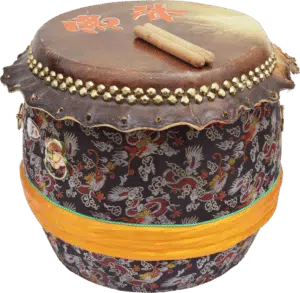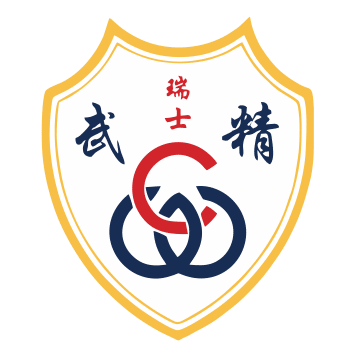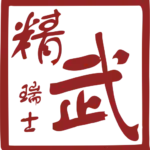Swiss Elite Athletic Association
Differences between lion dance and dragon dance from China

Although the difference between dragons and lions is very easy to tell, many people refer to the lion dance as Dragon Dance .
Lion Dance and Dragon Tnz from China what is the difference
Traditional Lion Dance
The traditional Chinese Lion dance became a traditional form of Chinese folk dance. It consists of two people dressed in a lion costume that resembles a lion and who are accompanied by the sound of drums and gongs. The head is usually made of bamboo or paper and is carried by the dancers. This dance is believed to bring good luck and prosperity to spectators, which is why it is often performed on important occasions such as weddings or celebrations. The dance itself can be quite complicated, with various movements that describe the lion's movements, such as stalking, roaring, and even jumping over obstacles.
Each region has its own unique style of Chinese lion dance, so every performance can be an exciting experience where no two are the same. Despite its age, the tradition captivates spectators every year with its colorful costumes and energetic performances. There is also a northern and a southern lion.
Chinese Dragon Dance
The Chinese Dragon Dance is an ancient tradition that dates back centuries. This is a performance art in which dancers manipulate a large, long dragon puppet with the help of poles while moving to the beat of drums and cymbals. The dragon is often considered a symbol of leadership and prosperity and represents the Chinese culture the man. This grandiose spectacle of colours, music and movement is a real feast for the eyes. During the dance, the performers intertwine in intricate patterns and formations as they twist and turn the kite into the sky.
The Dragon Dance is believed to bring good luck and wealth, which is why it is popular at festivals or special occasions such as weddings or business openings. Although it can be compared to other dances such as the lion dance, the dragon dance stands out for its unique display of strength and luck.
Traditional Chinese New Year with Lion Dance and Dragon Dance is a must
The Chinese New Year – with lion dance and dragon dance – is an important traditional festival celebrated in China. The festival traditionally lasts 15 days and is known as the Spring Festival. One of the most famous activities that take place during the Chinese New Year is the Lion Dance and the Dragon Dance. In the lion dance, two performers wear a lion costume, symbolizing strength and courage, and dance to rhythmic drum sounds. The Dragon Dance is similar, but includes several performers wearing a dragon costume and dancing around with a long paper dragon head. Both dances are said to bring happiness, prosperity and wealth to the spectators.
The Chinese New Year also includes fireworks, parades, lanterns, feasts and much more. It's a time when families come together and enjoy each other's company as they celebrate this festive holiday. manipulate long dragon puppets with the help of poles as they move to the beat of drums and cymbals.
The dragon is often considered a symbol of leadership and prosperity and represents the man in Chinese culture. This grandiose spectacle of colours, music and movement is a real feast for the eyes. During the dance, the performers intertwine in intricate patterns and formations as they twist and turn the kite into the sky. The Dragon Dance is believed to bring good luck and wealth, which is why it is popular at festivals or special occasions such as weddings or business openings. Although it can be compared to other dances such as the lion dance, the dragon dance stands out for its unique display of strength and luck.
Dragons and Lions – The Two Sides of Chinese Culture
The importance of dragons in Chinese culture is very great. In contrast to Western countries, where dragons are often depicted as evil beings, in China they are considered symbols of good luck and protection. They are part of many myths and legends and are often associated with wisdom and power. In Chinese mythology, the dragon is considered one of the most powerful signs of the zodiac. They are often associated with the emperor, who is considered the ruler of all dragons.
Lions, on the other hand, are a symbol of strength and courage in China. They are considered protectors of kingdoms and are often depicted together with dragons. In Chinese mythology, there is the story of yin and yang, two opposing forces that keep the universe in balance. Yin stands for the female power, while Yang represents the male power. Lions are considered the epitome of yang and are therefore a symbol of strength and power. So the importance of dragons and lions in Chinese culture is very different.
While dragons are more associated with wisdom and power, lions stand for strength and courage. However, both animals are considered symbols of good luck and protection and are therefore very important in Chinese mythology and culture.
The importance of dragons and lions is also reflected in the Chinese language. Thus, the word "dragon" (龙) also means "power" or "strength", while the word "lion" (狮) means "courage" or "bravery". So, in Chinese culture, dragons and lions are two sides of the same coin. They represent the different aspects of human life and reflect the dualistic nature of Chinese culture. All Chinese and Asian people in general love the lion dance and dragon dance.
Who performs the Chinese lion dance and dragon dance?
The Chinese lion dance and dragon dance are traditionally performed by special groups or teams, often consisting of members of cultural associations, temple societies or martial arts academies. These dances are an important part of festivals and celebrations, especially during the Chinese New Year.
Lion Dance performers: A team of two dancers who act in a lion costume. One moves the head and front legs, while the other controls the body and the hindquarters. Goal: The lion dance is supposed to bring good luck and drive away evil spirits.
Dragon Dance performers: A larger group of dancers who maneuver a long dragon figure together. The number of dancers can vary, often several dozen. Objective: The Dragon Dance symbolizes strength and power and is often performed to promote prosperity and good luck. Both dances are very dynamic and require a lot of practice as well as teamwork to perform the movements synchronously and impressively. Book one now Lion Dance and Dragon Dance

